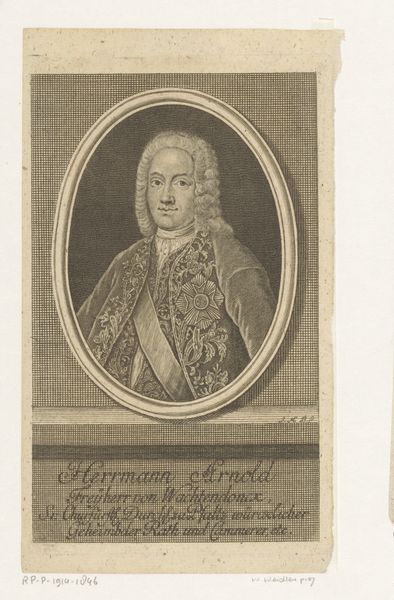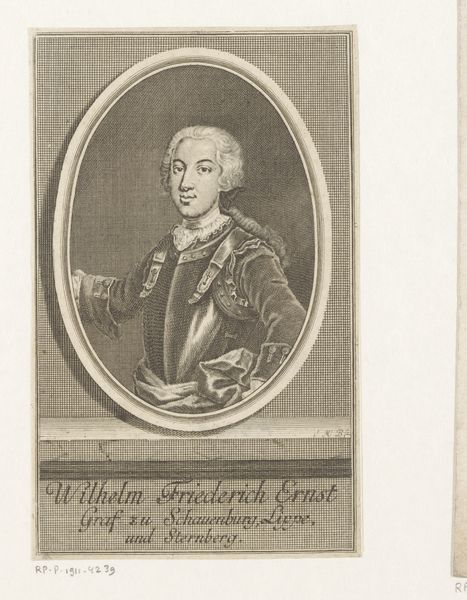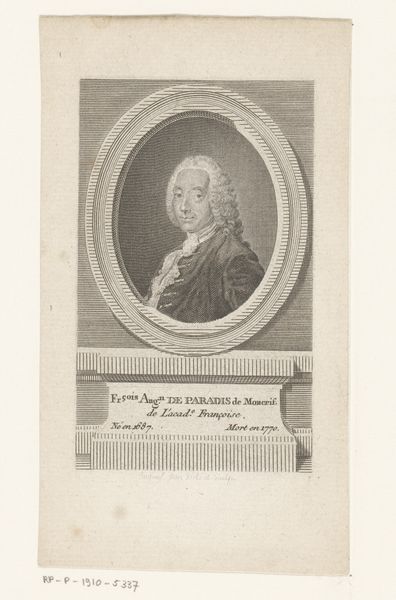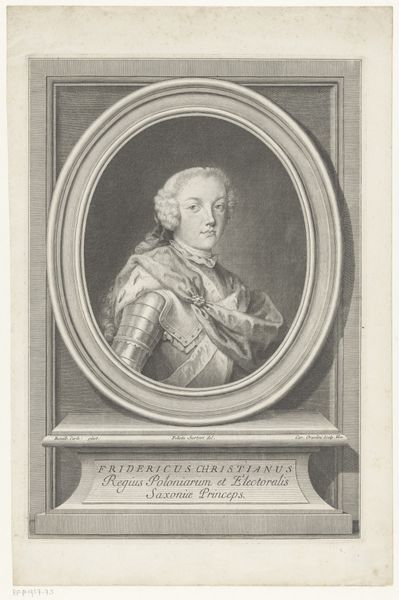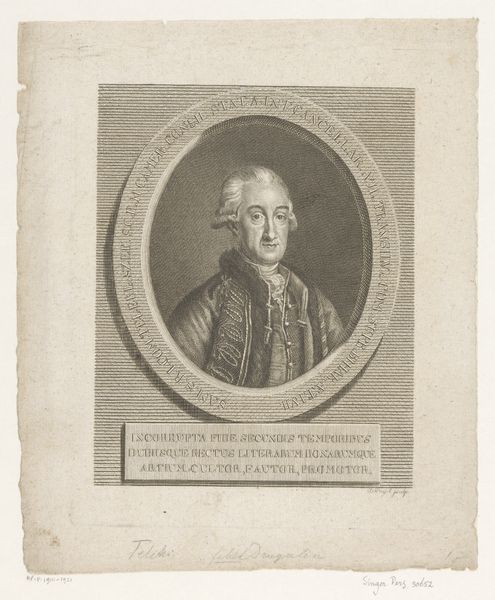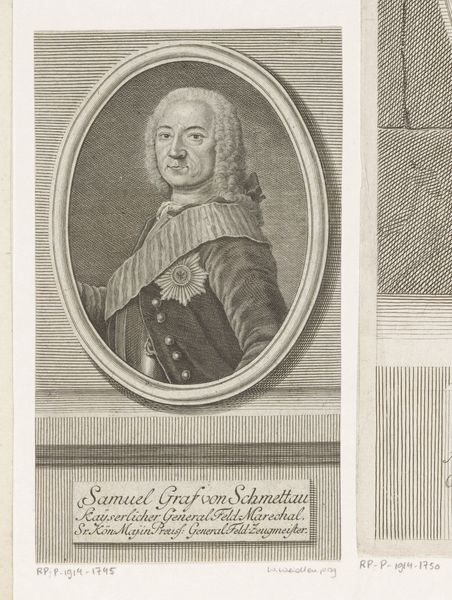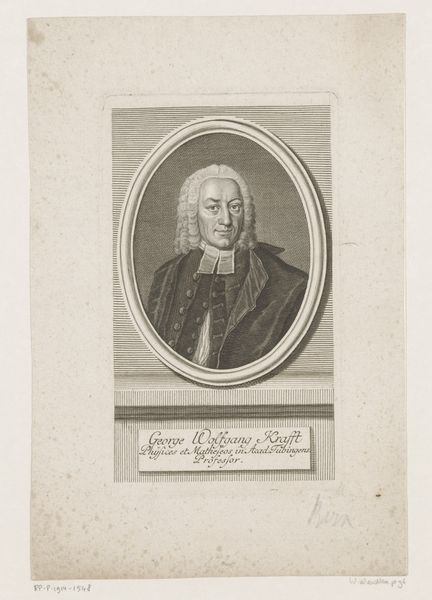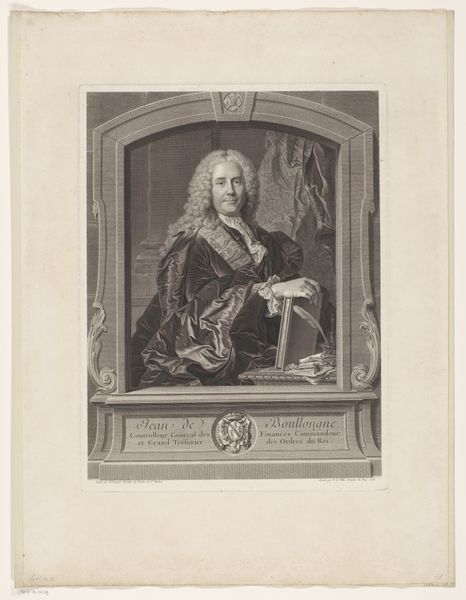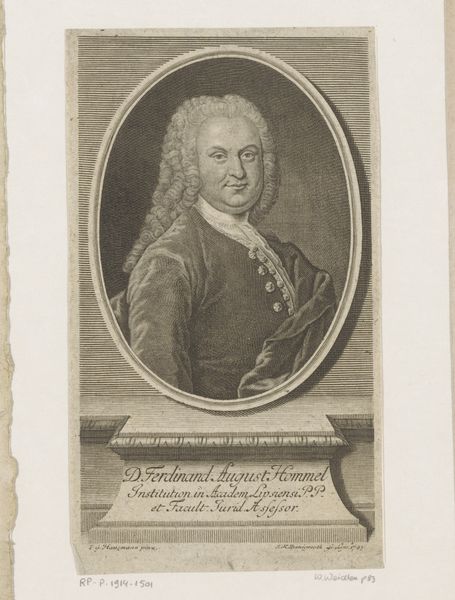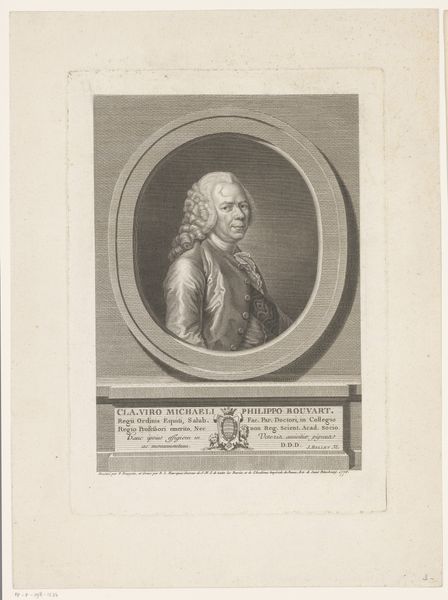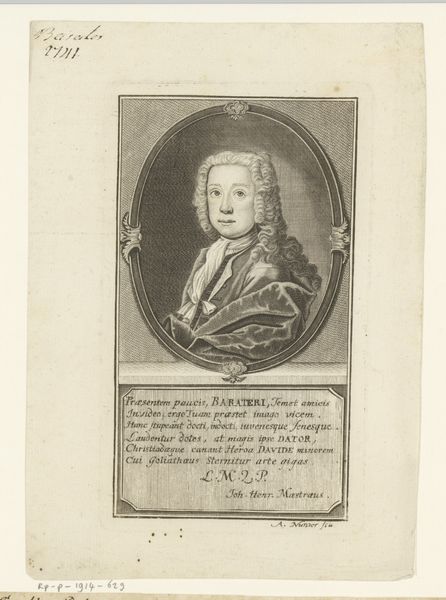
Portret van Johann Friedrich Carl von Ostein, keurvorst en aartsbisschop van Mainz 1743
0:00
0:00
print, engraving
#
portrait
#
pencil drawn
#
baroque
# print
#
old engraving style
#
line
#
history-painting
#
academic-art
#
engraving
Dimensions: height 154 mm, width 95 mm
Copyright: Rijks Museum: Open Domain
Curator: Here we have a 1743 engraving, "Portret van Johann Friedrich Carl von Ostein, keurvorst en aartsbisschop van Mainz." The piece, created by Johann Martin Bernigeroth, is now part of the Rijksmuseum's collection. Editor: It's interesting how the sharp lines of the engraving create a kind of rigid formality, contrasting with the flowing wig and the plushness of the fur stole. It feels opulent, but constrained. Curator: The engraving itself serves as a powerful status symbol. Printmaking at this time disseminated power. It's no accident that we see the Archbishop so prominently displayed and memorialized, controlling representation of himself for both religious and political ends. Editor: I'm thinking about the tools used to create this image, the labor involved in carving those precise lines. Engraving demanded specific skills and the accessibility of materials dictated what could be created and who had access to making and commissioning the art. Curator: Absolutely, this isn’t simply a portrait, but an assertion of identity within a very hierarchical societal structure. The subject's attire, his wig, his official garments, all signal his rank. It’s vital to see it not just as an image of one man, but a statement about power in the age of aristocratic Europe. Editor: Right, and that access to materials would've been limited. Think about the societal structures surrounding access to art. It makes you consider the engraver’s position, reproducing images for someone of such privilege. What would he earn and how did that position him relative to the sitter? Curator: In terms of power, seeing these historical pieces enables a critical examination of power, class, and representation in previous eras. It challenges us to apply the lessons of the past to present issues of inequality. Editor: Looking closely, I find myself impressed by the detail achieved through such controlled and deliberate physical activity; engraving. It offers a concrete reminder of the value of artistic and technical skills within historical hierarchies of production. Curator: Considering how those values translate into our understanding of both the piece and history overall leaves me thoughtful. Editor: Indeed, it makes you reconsider what "art" has represented for those involved.
Comments
No comments
Be the first to comment and join the conversation on the ultimate creative platform.
